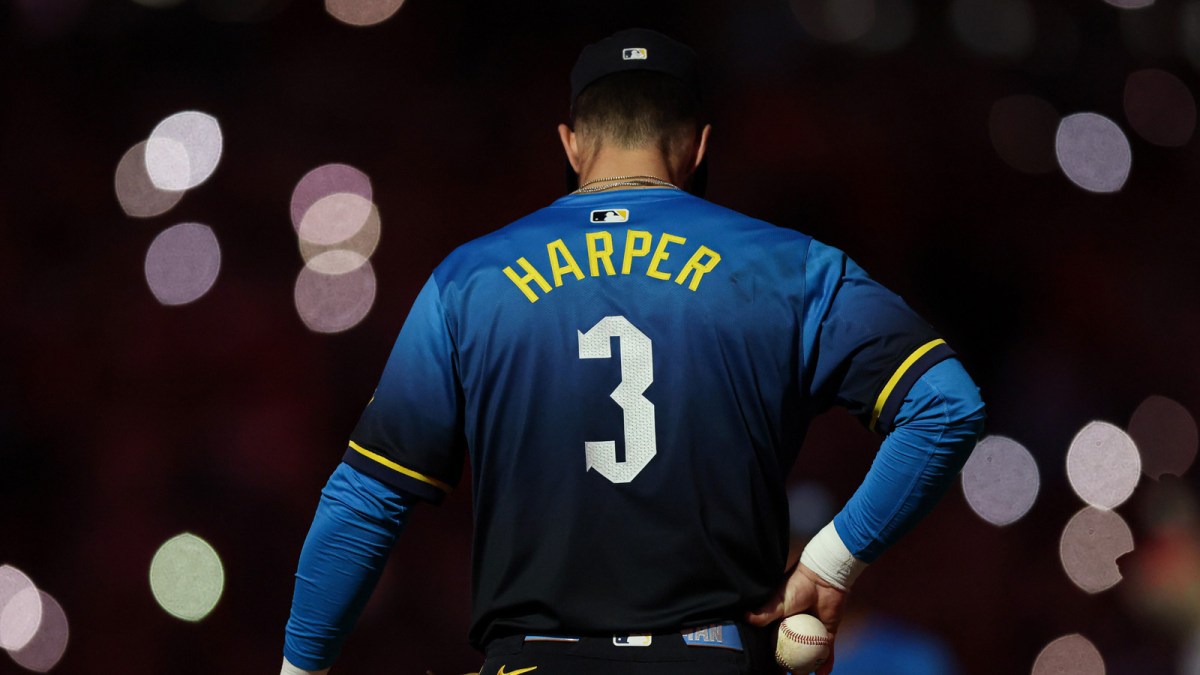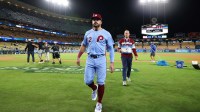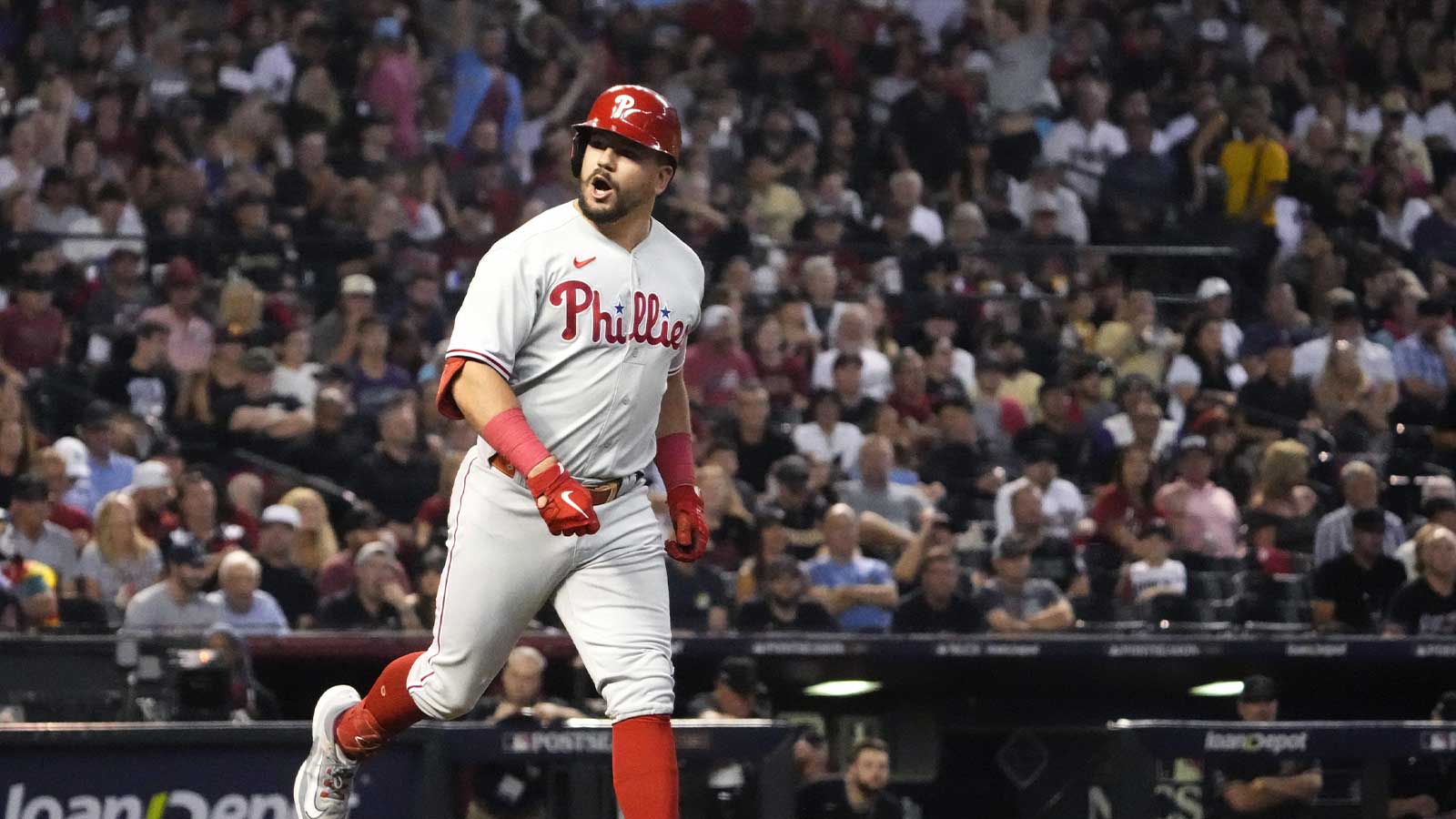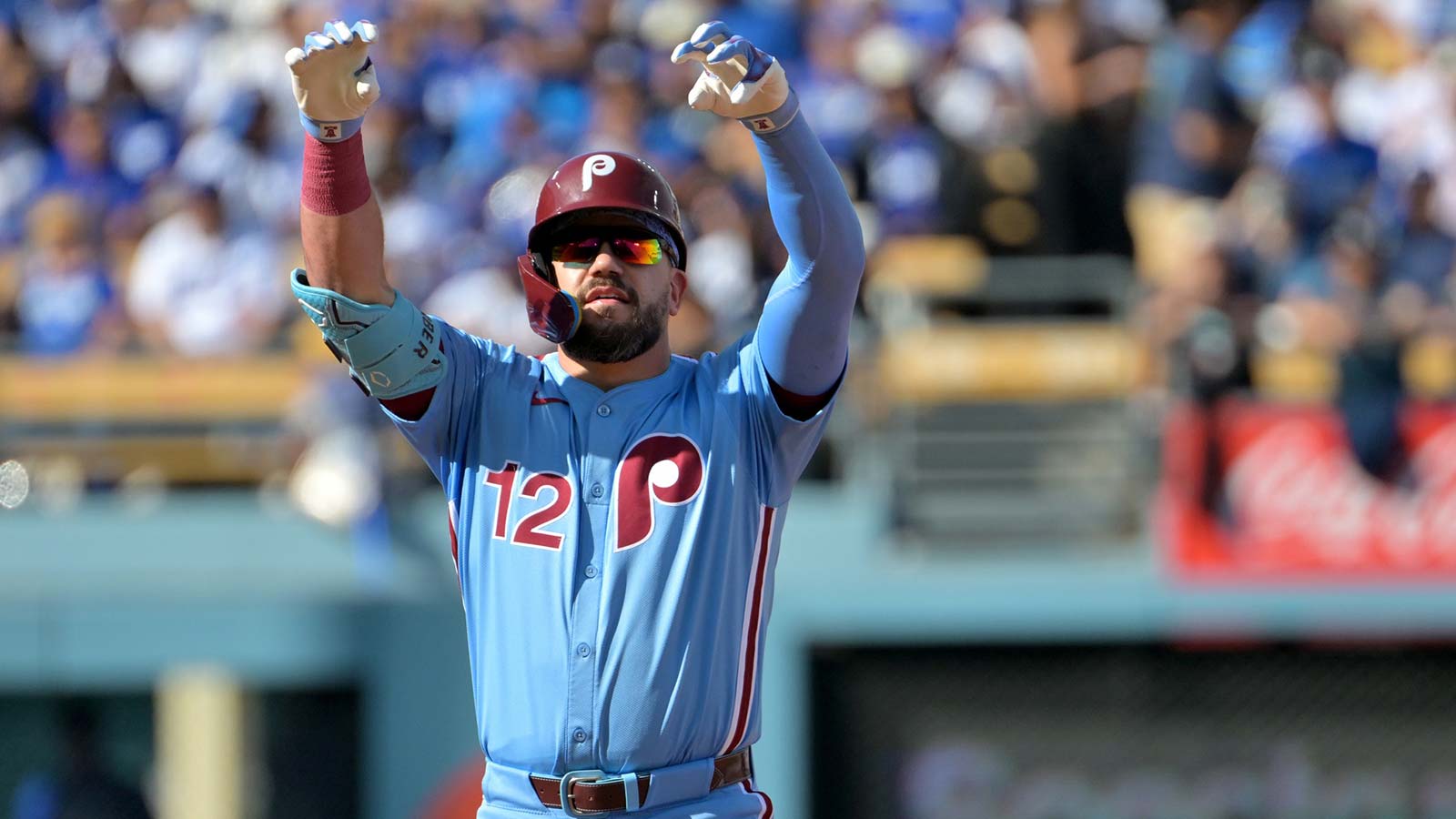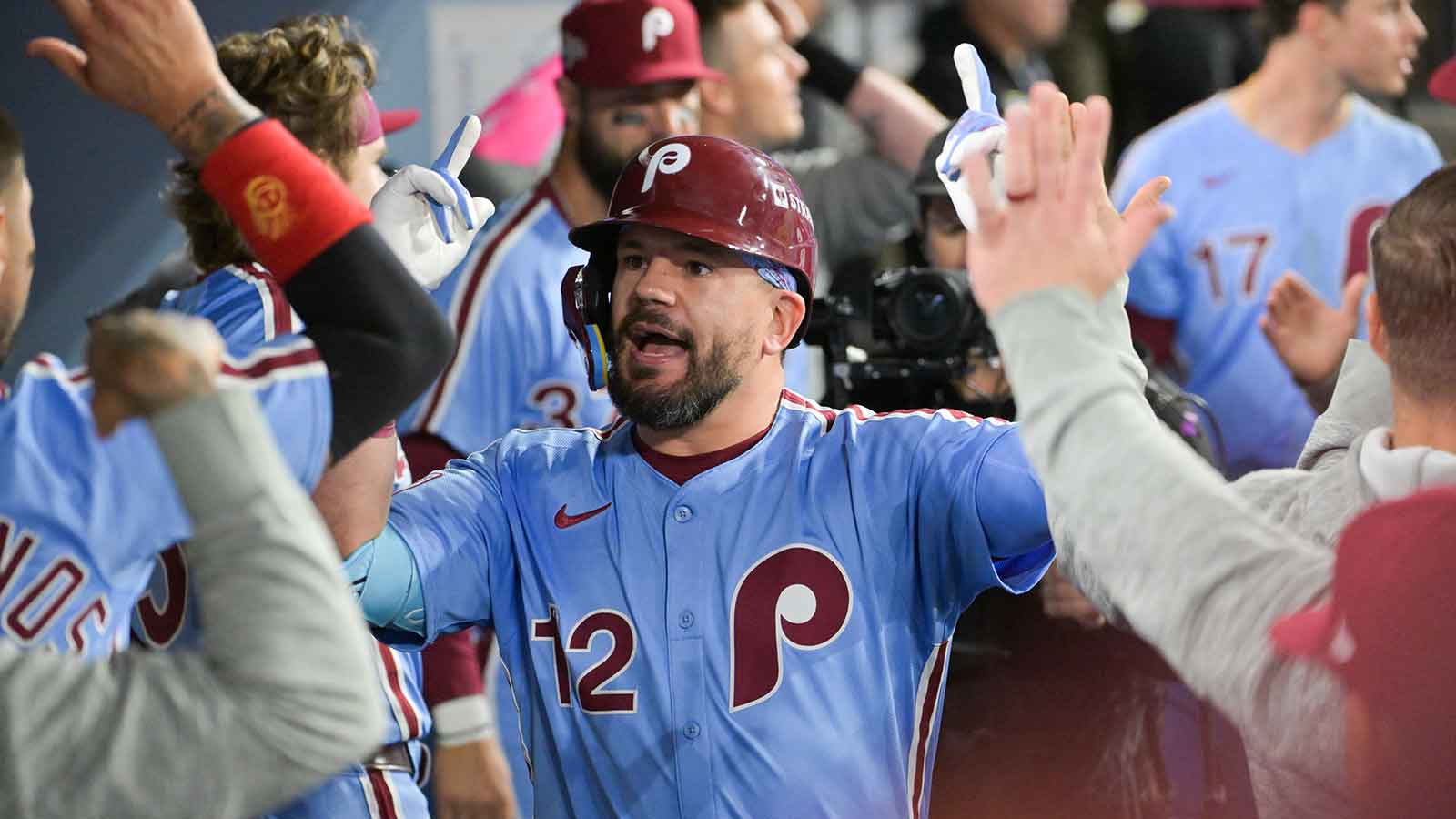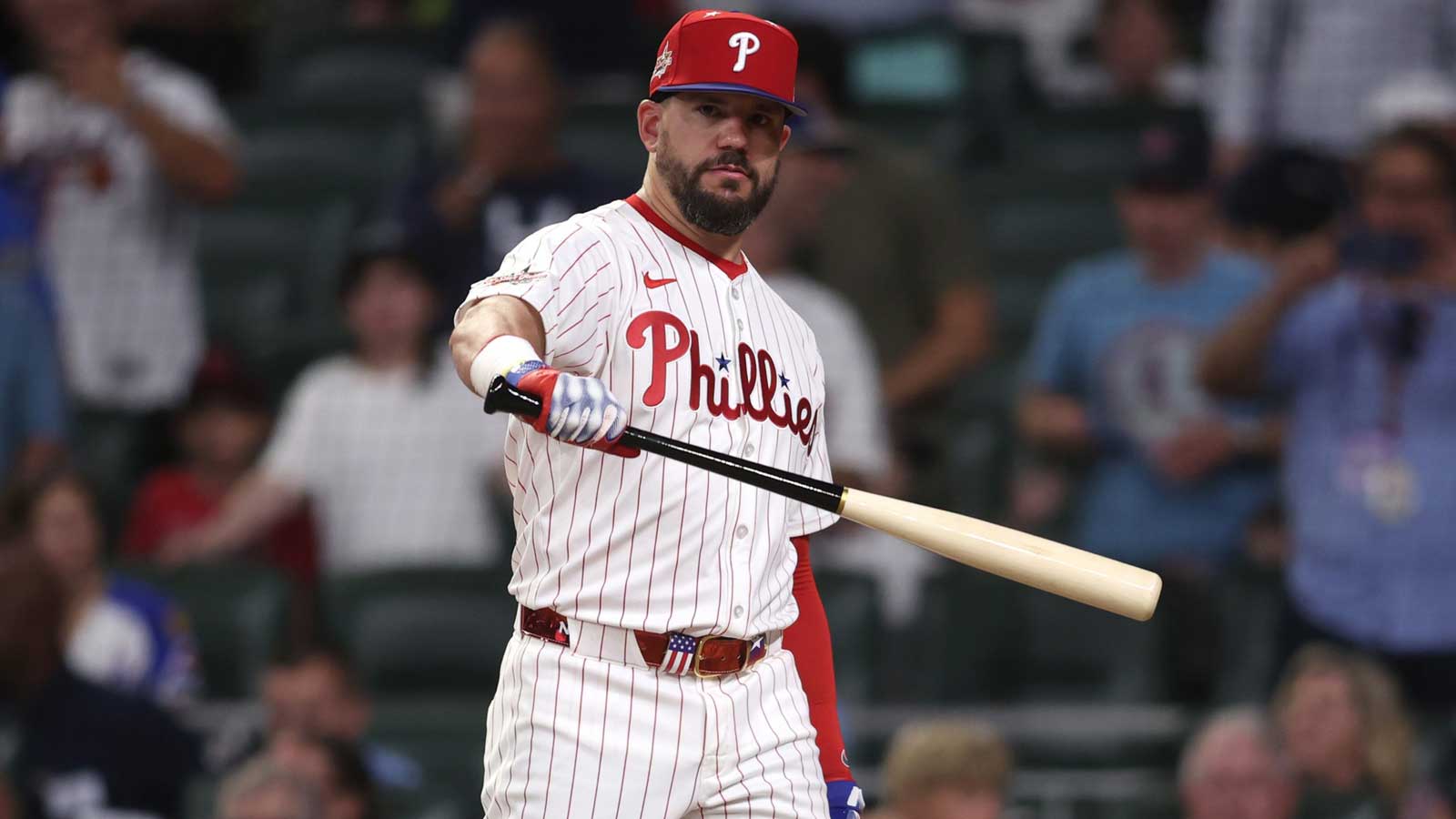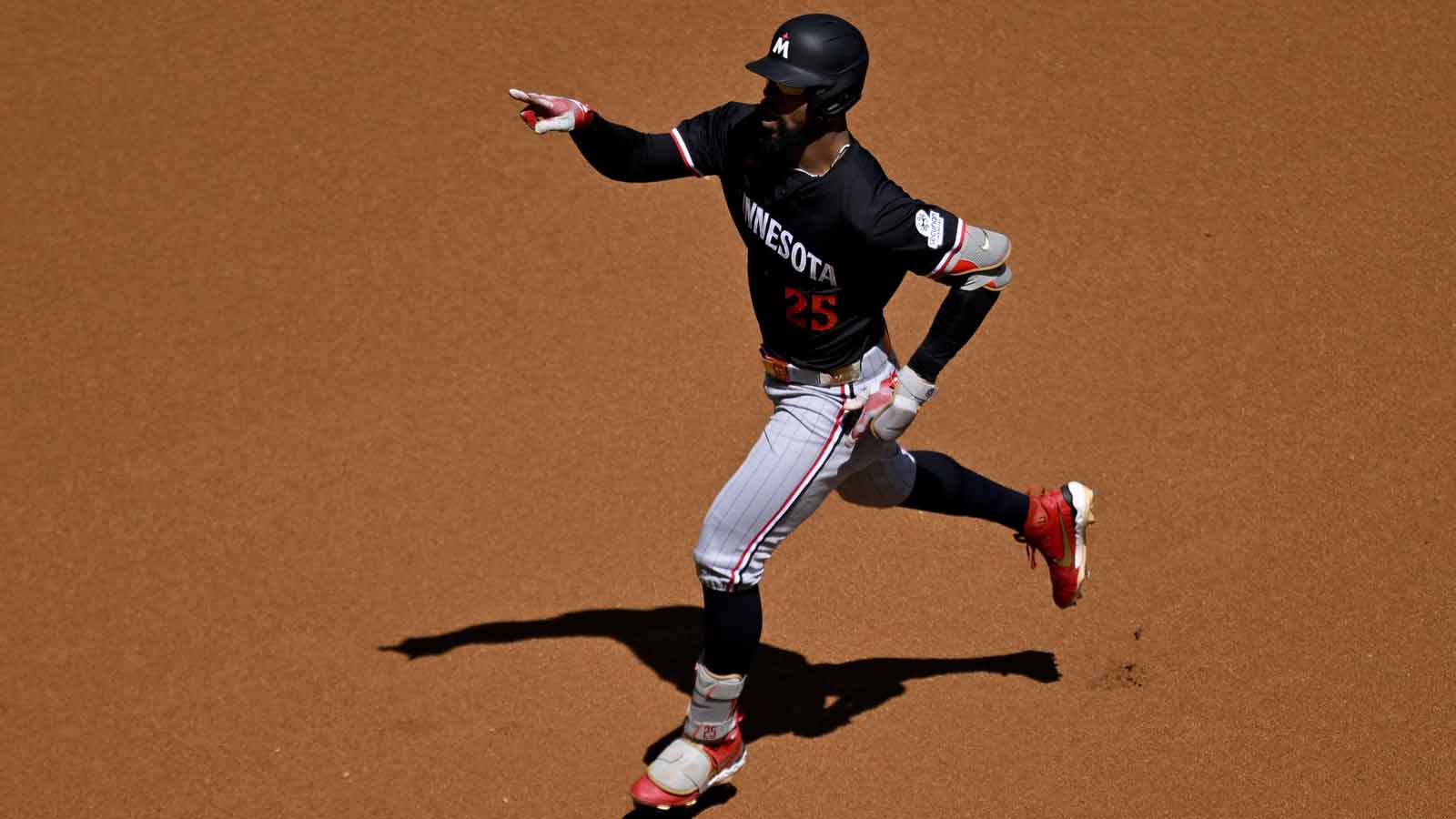The idea of the Philadelphia Phillies stunning the baseball world by moving Bryce Harper isn’t just unrealistic — it ignores everything he represents. It overlooks who he is, what he’s built, and why he remains the Phillies franchise cornerstone. Any chatter tied to Phillies trade rumors involving him falls apart the moment you apply baseball logic, financial reality, cultural impact, or the team’s competitive timeline. He is not leaving, and there is no credible argument that even begins to justify the thought.
The reasons start with production. Calling the 33-year-old's 2025 season a “down year” ignores the reality of what he played through. Harper posted an .844 OPS, 27 home runs, and 75 RBI while managing a right wrist injury that limited his ability to drive the ball. Even with that setback, he remained a hitter 30 to 40 percent better than league average. Players across the league would call that a dream season. Superstars call it the injured version of themselves. That is why the Phillies superstar still anchors every offseason decision the organization makes. His numbers also age well. With 363 home runs, a .906 career OPS, and two MVP awards, he is on a clear first-ballot Hall of Fame path.
He also brings postseason weight no metric captures. Philadelphia will never forget what he did in 2022, from the Bedlam at the Bank homer to the NLCS dominance. His playoff failures in 2025 do not erase the reality that he has repeatedly changed October for the Phillies. Trading a player who shifts pressure, elevates teammates, and defines the franchise’s biggest moments ignores a decade of proof.
The financial part makes the debate even stranger. Harper's contract value alone ends the conversation. His $25.38 million AAV remains one of baseball’s most shocking bargains. Players nowhere near his production earn more. Superstars with similar impact cost double. The Phillies pay top-10 money for top-five output. You do not trade surplus value on an ironclad, full no-trade-clause deal that he would never approve. Reports that he was “hurt” by even mild speculation make the idea of him waiving it impossible.
The cultural cost would be worse. Harper changed the economic pulse of the franchise the day he signed. Ticket sales exploded. Jersey sales set all-time records. Attendance, local ratings, and national relevance rose with him at the center. Removing him would gut the clubhouse, alienate the fanbase, and destroy the front office’s reputation league-wide. No star would trust the Phillies again. Philadelphia would lose the recruiter who helped bring in Trea Turner and shaped the roster’s identity.
The 2025 MLB offseason only amplifies the point. Kyle Schwarber has not departed, and both sides want to reunite, but after his elite season — and with the Phillies already carrying a heavy payroll — they may not reach a number that works for both. Schwarber hit .240 with 145 hits, 56 home runs, 132 RBI, and 111 runs scored across 162 games in 2025, the kind of production that commands a major contract. That makes the possibility of him walking very real. If that happens, a massive void opens in the lineup, and opponents will adjust immediately. Teams will isolate Harper in high-leverage moments and exploit the sudden lack of power behind him. And that strategic shift puts even more pressure on the Phillies to upgrade the roster instead of entertaining fantasy-level trade talk. This is a team that needs more support around its superstar, not a self-inflicted crisis created by removing its most dependable bat.
The superstar is not the problem. He is the solution. Trading him would be malpractice at every level of baseball operations.

